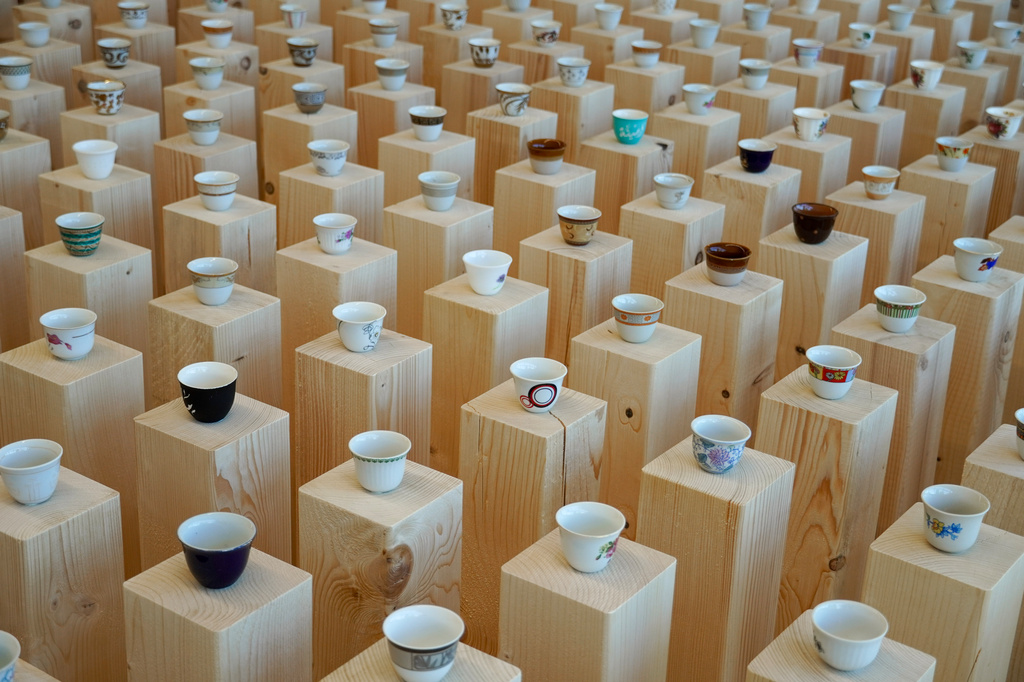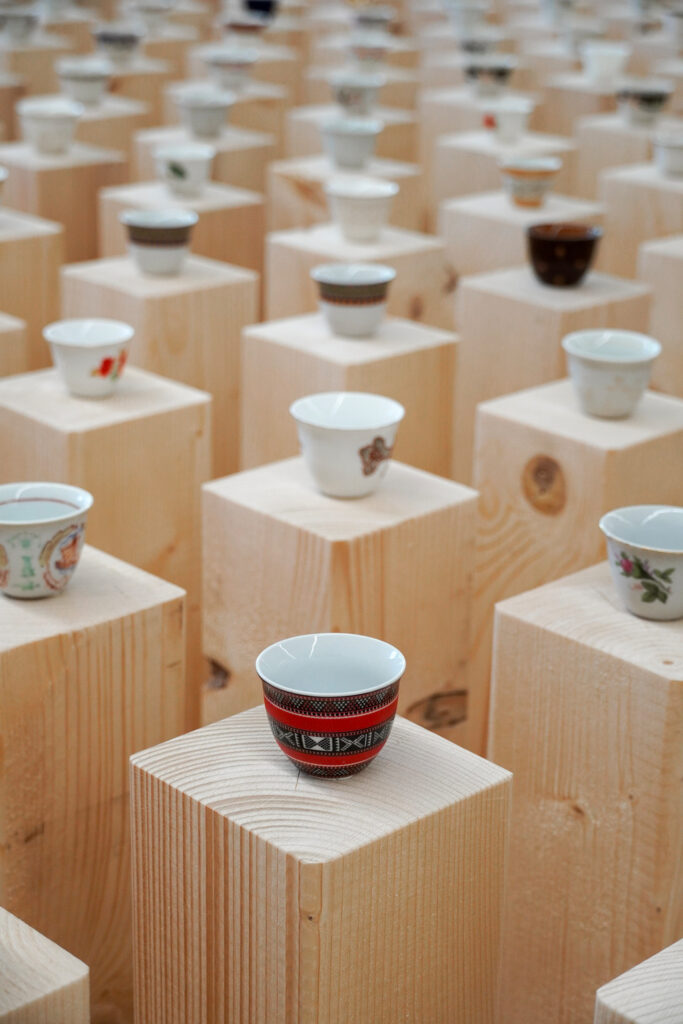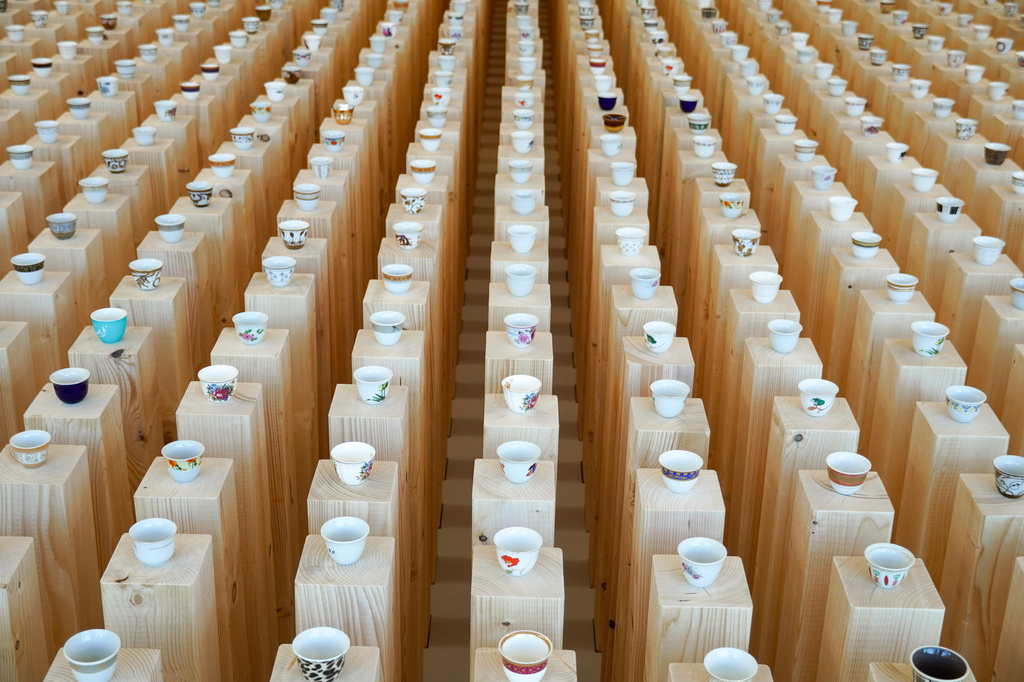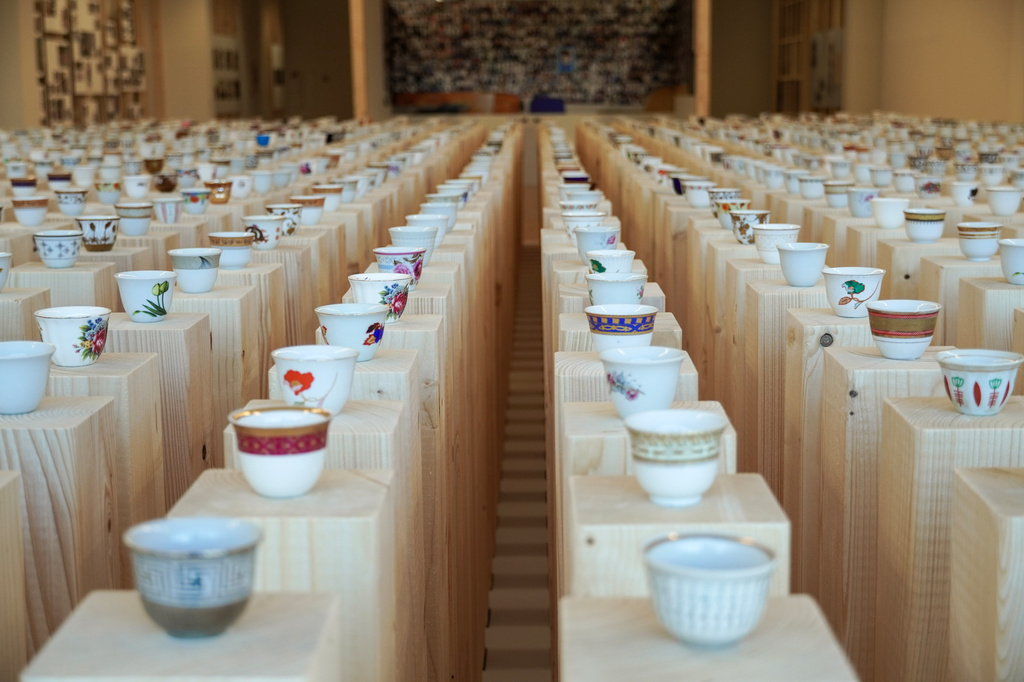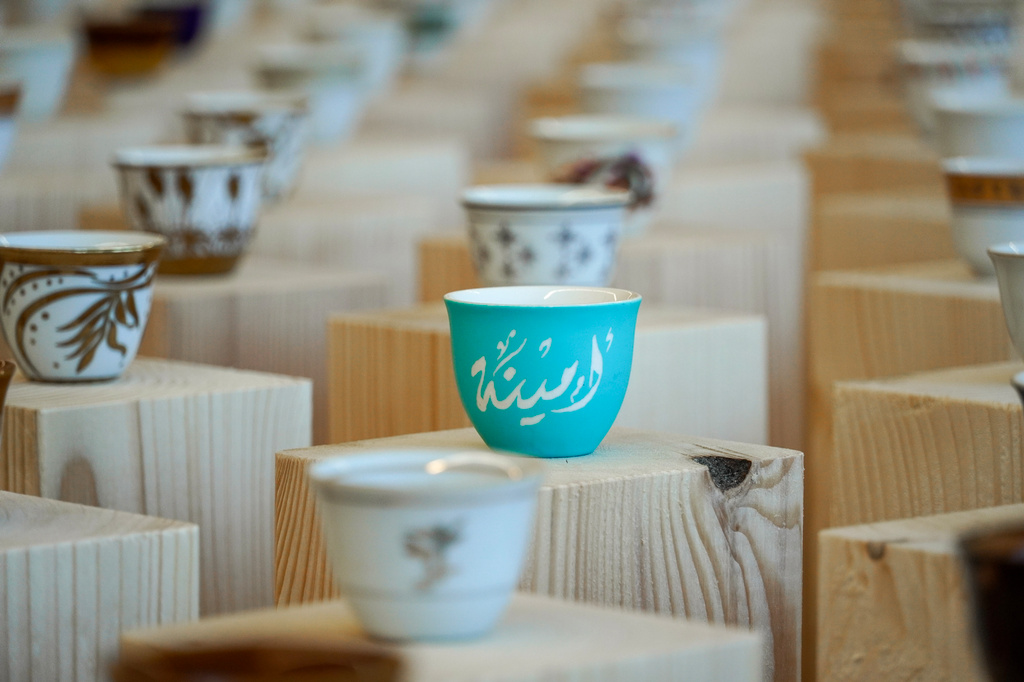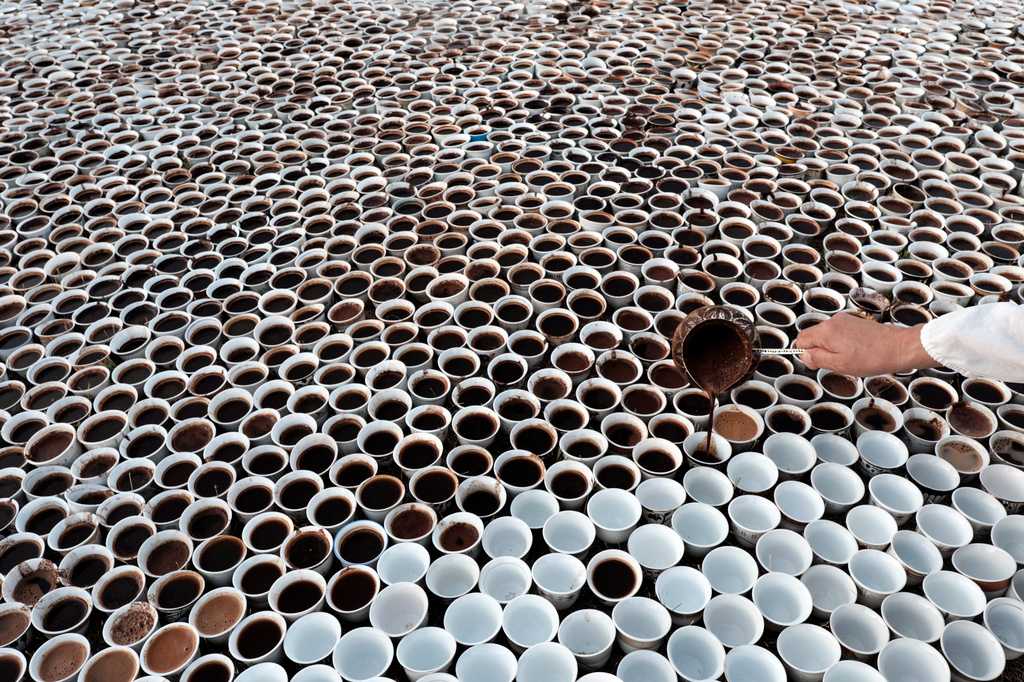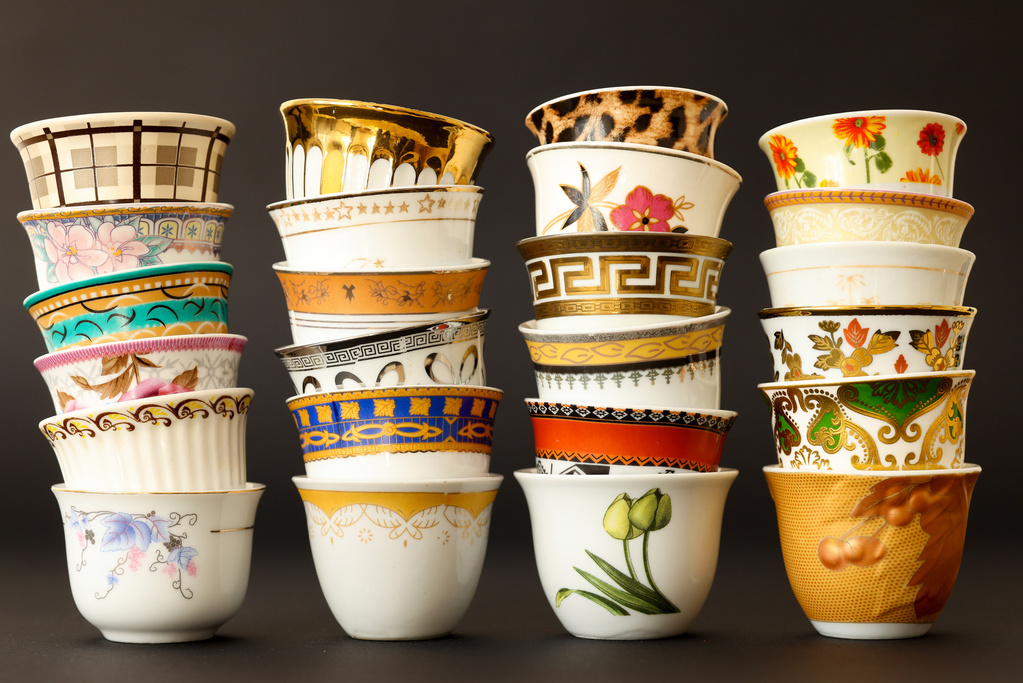- Aida Sehovic STO TE NEMA. Inc. & Studio L A
- Aida Sehovic STO TE NEMA. Inc. & Studio L A
- Aida Sehovic STO TE NEMA. Inc. & Studio L A
- Aida Sehovic STO TE NEMA. Inc. & Studio L A
- Aida Sehovic STO TE NEMA. Inc. & Studio L A
Jessica Hemmings is moved by an installation of coffee cups to mark the 30th anniversary of the Srebrenica genocide.
On July 11th 1995, the Bosnian-Serb Army murdered more than 8,372 Muslim men and boys in Srebrenica. To mark the 30th anniversary of the genocide, architect Arna Mačkić (Studio L A) and artist Aida Šehović (ŠTO TE NEMA) present the exhibition Cups of Memory as a form of remembrance and record of the participatory version of the project situated in city squares around the world. The exhibition’s location in The Hague takes on particular importance. The Dutch city is home to the International Criminal Court, where prosecution of war crimes, genocide and crimes against humanity takes place. Perhaps less well known, is the role the UN Dutch Battalion (Dutchbat), played through their lack of intervention in the genocide that took place in Srebrenica.
Mačkić and Šehović, both survivors of the Bosnian War (1992-1995), use Cups of Memory to confront the lack of Dutch collective memory surrounding this history. The centrepiece of the exhibition is 923 fildžani, traditional ceramic coffee cups, displayed on wooden obelisks similar in height and width to the white grave stones at the Srebrenica Genocide Memorial in Potocari, Bosnia and Herzegovina. The project began on the 2006 anniversary of the massacre when Šehović, working with a women’s organisation in Sarajevo, initiated the collection of donated fildžani. The long-term participatory version of the project, titled ŠTO TE NEMA, which translates as Why are you not here? sets the cups in city squares around the world and invites the public to fill each cup with Bosnian coffee.
The resulting carpet of undrunk cups of coffee offers a silent gesture of remembrance with 8,732 fildžan now collected to mark the loss of life. On display at KM21 are the first 923 fildžani collected, displayed unfilled in an oblong grid with one empty space marking the centre point. Accompanying video footage captures the public’s filling, witnessing and later washing and repacking of the cups in a moving record of collective care. Also included are a series of photographic portraits made in 2020 by the Bosnian Girl collective and photographer Robin de Puy depicting 25-year-old Bosnia-Dutch individuals, which was first displayed as a temporary monument near the seat of the Dutch government in The Hague’s Plein square.
At KM21, I lingered over the cups, looking for pairs and matching sets spread across the many on display. As mass-manufactured ceramics, they confront viewers with an incredibly moving reminder of the individual within the collective, of details shared as well as moments of difference. This use of ceramics does not draw on the mark of the maker’s hand so often cited in craft discourse as a trace of the individual in the face of mass manufacture. Here, the reality that these cups are not wholly unique, that they once belonged to sets, groups and pairs, makes the work all the more moving. On the one hand, these cups are mundane. They could belong to anyone. And yet they are not. They tell the story of yet another genocide in the world with a powerfully humanising reminder of the individual.
KM21, the Hague, the Netherlands 12 July – 16 November 2025


